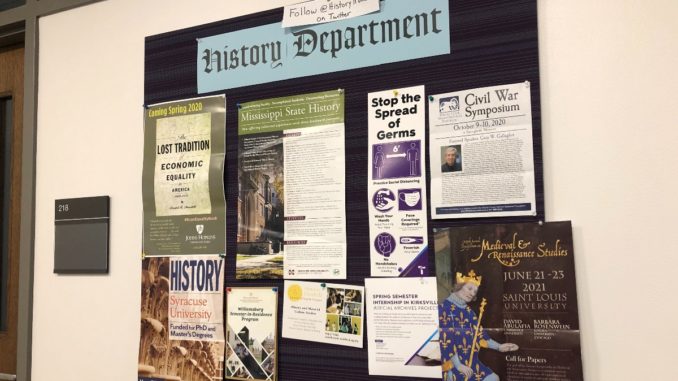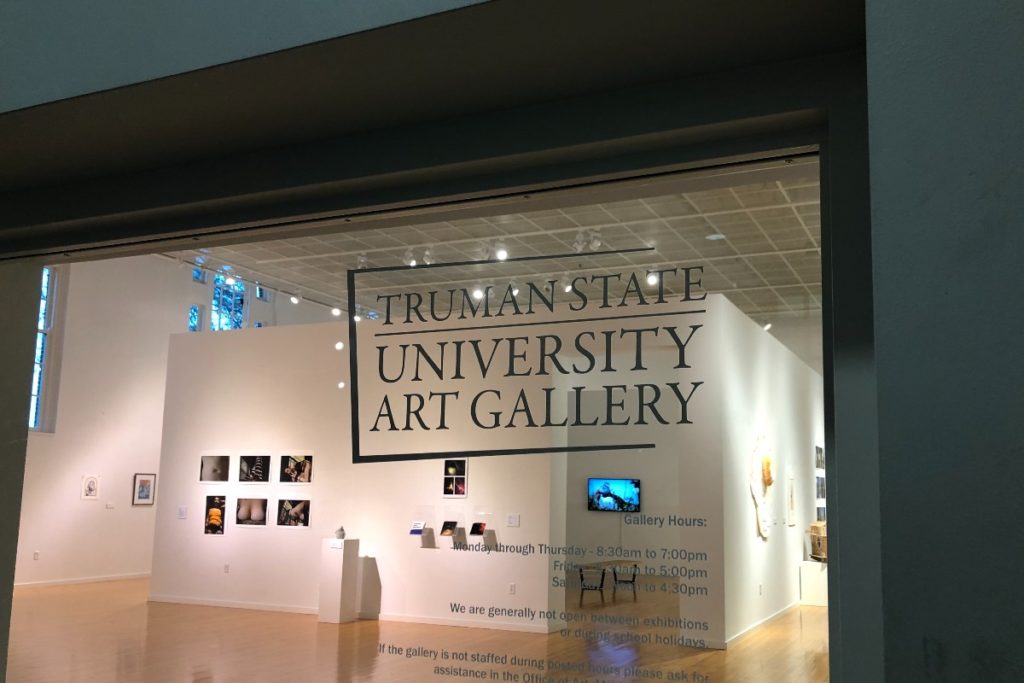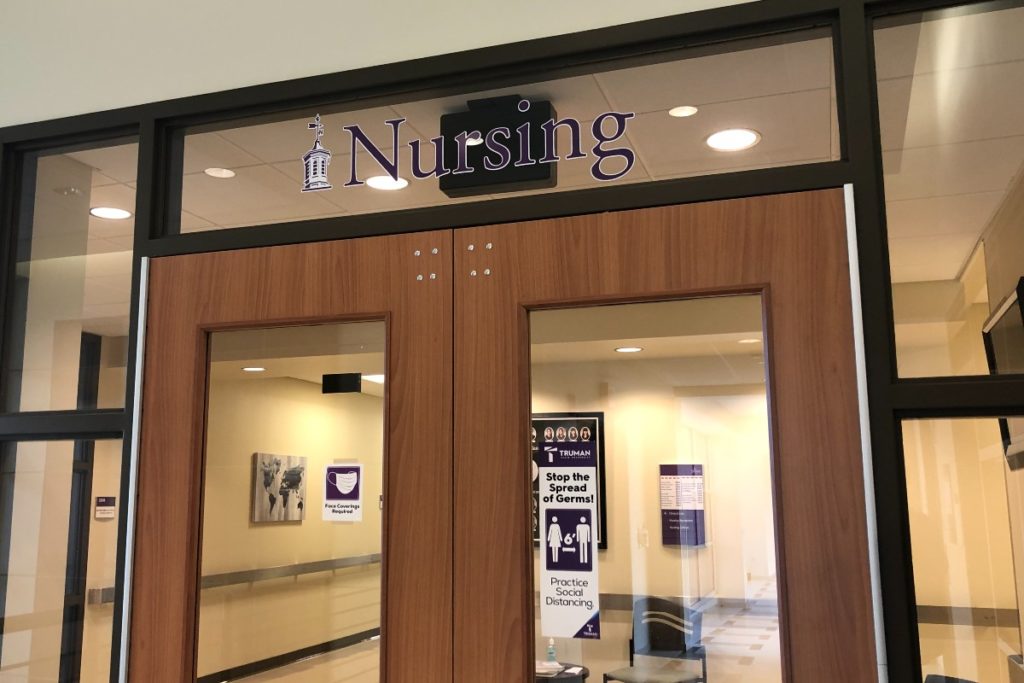
With the incredible reach that the COVID-19 pandemic has had on almost all aspects of human life, it was only a matter of time before the pandemic made its way onto the syllabus. Professors at Truman State University described how COVID-19 has made its way into the classrooms and how it could change the professional worlds of their respective fields.
HISTORY
When we look back at the long road of history, the widespread outbreak of disease is not an entirely new phenomenon. From the Spanish Flu of 1918 to the SARS virus that ravaged parts of East Asia in 2003, the study of history can give society valuable insight regarding the current pandemic.
“I think that the past is best served to challenge our assumptions about the present rather than to attempt to create a predictable pattern for the future,” history professor Stephanie Russell said.
As a history scholar, Russell has an acute interest in Medieval Europe. This interest led her to find parallels between the current pandemic and the Bubonic Plague that swept through the world in the mid-1300s, killing tens of millions of people.
Russell explained that even when the black death arrived in Florence and the Italian city-states there were already examples of quarantine protocols happening, specifically in the city of Dubrovnik, located in modern-day Croatia.
During the Bubonic Plague outbreak, quarantines as long as 40 days were often enacted in order to protect the populations not yet affected, and to isolate those that had been exposed elsewhere. There were also initiatives put in place to ensure that citizens would be able to isolate without the need to work, while also ensuring that they had food for their families.
“It challenges the idea that people were somehow not as smart as we are today and it also … shows us the flaws in assuming that something like faith will protect them,” Russell said. “We see absolute parallels between the populations now in very human kind of ways.”
Russell said her interest regarding the pandemic doesn’t stop at the study of the Medieval era but carries into her contribution to one of the newest classes here at Truman, History of the Environment.
Environmental history, Russell said, is defined as the ways in which humans interact with the environment around them. Spanning from early settlements all the way to modern human civilization, environmental history analyzes both the effects that humans have had on the environment, as well as the environment’s effects on humans.
One of the earliest topics covered within the class is how the current pandemic is related to environmental history. Russell said she uses COVID-19 to demonstrate how something like a pandemic could be caused by man encroaching into animal’s habitats.
Russell anticipates that within the coming years, environmental history will become a very popular field of study.
“The environment, no matter what side of the political spectrum you’re on, is something that has become a pressing issue …it’s something that we want to know more about — from a policy standpoint, from a personal standpoint or from an altruistic standpoint,” Russell said.
ART
The utilization of the internet to supplement in-person interaction has been a steady theme throughout the entirety of the COVID-19 pandemic. The field of art, however, has used it in a decidedly different way. From the publishing of online exhibitions to the live streaming of events, museums have found a way to reach their audiences at home.
“That’s really great because, sometimes the big museum in Kansas City or St. Louis will have events and I would love for my students to go to those, but they can’t,” Heidi Cook, assistant professor of art and art history and curator for the University Art Gallery, said, “And now if they’re live and they’re online, then people who aren’t in that place can also benefit from hearing really important artists talk in person about their work or really important scholars talk about their work.”
As the curator for Truman’s art gallery, Cook has played a role in ensuring that the gallery is able to reach patrons that might not be able to visit in person. An online reception was held in late August that included many students talking about the exhibition they helped curate, as well as some of their own art within the show.
Cook stressed the importance of talking about one’s work and being able to sell oneself as an artist, as well as the interdisciplinary aspect that comes with summarizing a work or idea.
Another aspect of the field that is bound to see a significant amount of change is the type of art that is produced in both academic settings and in the contemporary art world.
“I will say that my colleagues who are in studio art have told me that a lot of students have started making works about their experiences with the pandemic,” Cook said.
It’s the realization that we’re living in a very strange time, Cook said, and that it might be a good idea to record your experiences and feelings.
The high art world, however, might have a different theme. Political art might be the most popular genre to come out of this pandemic, especially pieces centered on the election, Cook said.
Although the internet has allowed artists the ability to showcase their work in virtual spaces, the pandemic has also taken a toll on the museum industry as a whole. Cook said she’s heard about museums that are very negatively affected by the pandemic and were required to layoff large chunks of their workforce. Without the ability to allow visitors into the galleries and museums, Cook said many will likely close. Between these closures and the growth of online exhibitions, the pandemic could change the field of art for years to come.
NURSING
The healthcare field, nursing specifically, will also change in ways that are both very predictable and also unforeseeable. A large number of nurses leaving the industry could be one of those changes.
“We have been expecting nurses to leave nursing when the baby boomers begin to retire, in addition to that, it is projected that there will be a lot of nurses that are leaving nursing… because of the conditions they had to work under because of COVID,” Nursing Department Chair Brenda Wheeler said.
Having talked to practicing nurses about the current state of the field, Wheeler spoke about a possible disheartening of those in the profession.
Some are being asked to wear personal protective gear for unsafe amounts of time. Wheeler said nurses have been taught that masks are one-time use, meaning it is used for one patient and discarded. Now nurses are asked to wear the same masks for an entire shift. Because they’re wearing masks all day, nurses are coming away with physical markings where their masks were located.
Wheeler said there have been a lot of nurses who have gotten COVID. Speaking about the domino effect caused by nurses becoming sick, she said other nurses are then required to fill in and possibly work longer amounts of time. Compounded on top of the already strenuous circumstances, Wheeler said nurses are now working under conditions that are by no means ideal.
Although this exodus of nurses, due to baby boomers retiring and disheartened workers changing courses, is somewhat predictable, there are some trends that are just too unpredictable to anticipate, such as enrollment numbers.
“I guess we don’t really know exactly how it’s going to affect prospective students or the prospective nurses,” Wheeler said. “Sometimes what they see is, ‘Man, there’s a real need and I really, really, really like to take care of people.’”
Wheeler said she understands how big of a role public perception and the media play into cementing someone’s desire to become a nurse, especially when many of the commercials on TV are celebrating the “front line workers” of the pandemic. Wheeler said she also understands the media’s presentation of nursing can, at times, be glamorized and once someone actually sees what it takes to be a nurse, their minds could change.
Although it may be shocking for prospective nurses to enter the field at a time like this, Wheeler spoke about some of the ways COVID-19 is being introduced into the classroom.
“In my nursing research class I have certainly had the opportunity to use COVID and to use the pandemic, you know, [asking] what type of a nursing problem might we have here because of the pandemic or whatever else,” Wheeler said.
It’s also given teachers the opportunity to stress one of the key traits of both nursing and Truman as a whole: critical thinking.
Wheeler said a critical-thinking question the nursing department emphasizes is “Why are we doing what we are doing and does it make sense?” This allows students to confidently determine whether they are providing the best practice possible.
A key theme throughout my conversations with these professors was a willingness to adapt and adjust to many of the problems that come with a pandemic. It’s only natural for people to wish that life could go back to how it was, but COVID-19 will continue to change the way that many live their lives. These changes include the way that teachers relate their curriculum to everyday happenings and the outlook for many academic fields.


